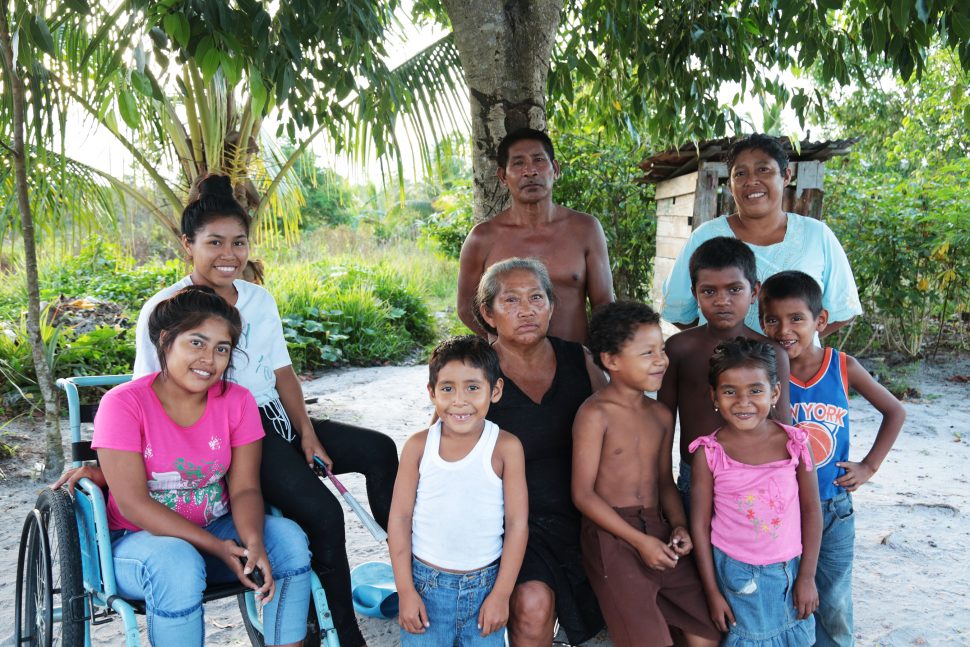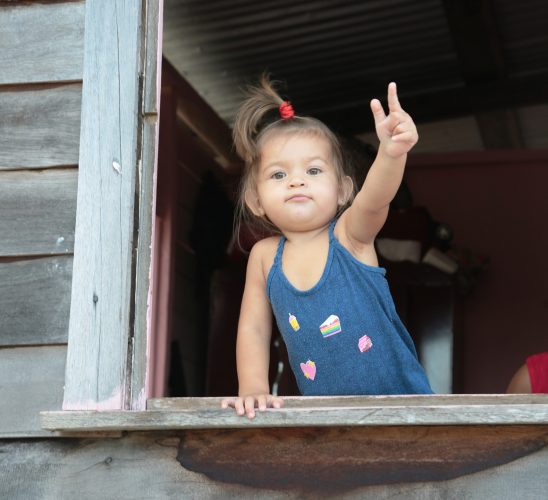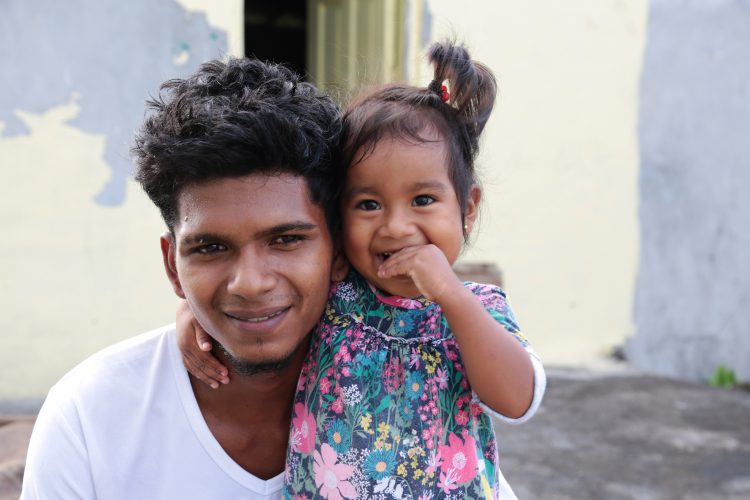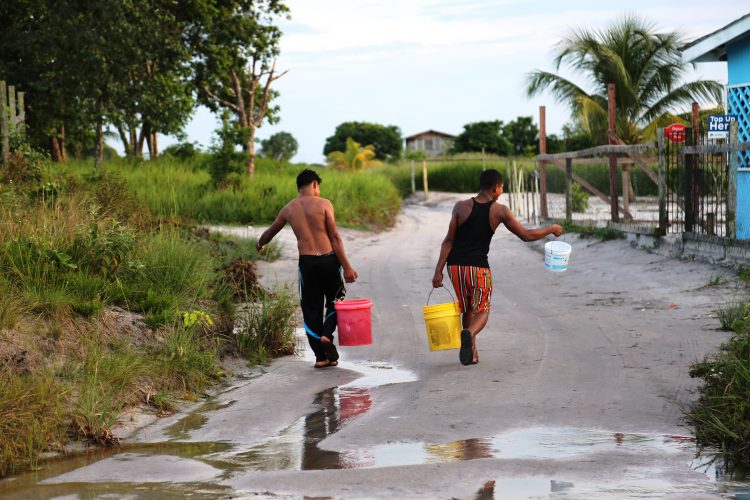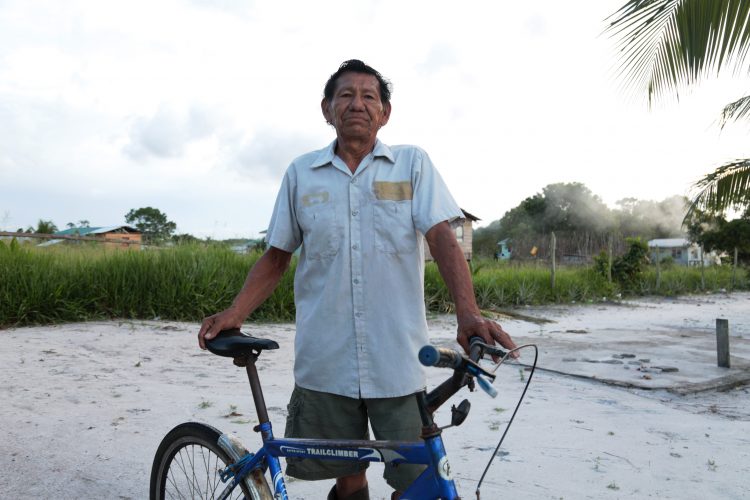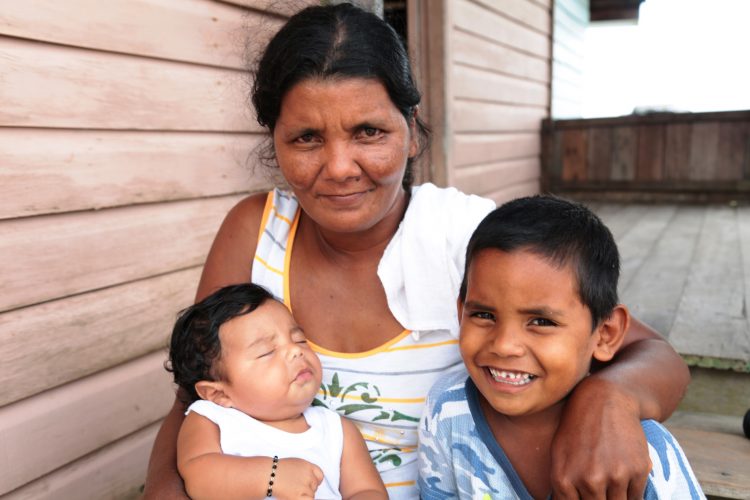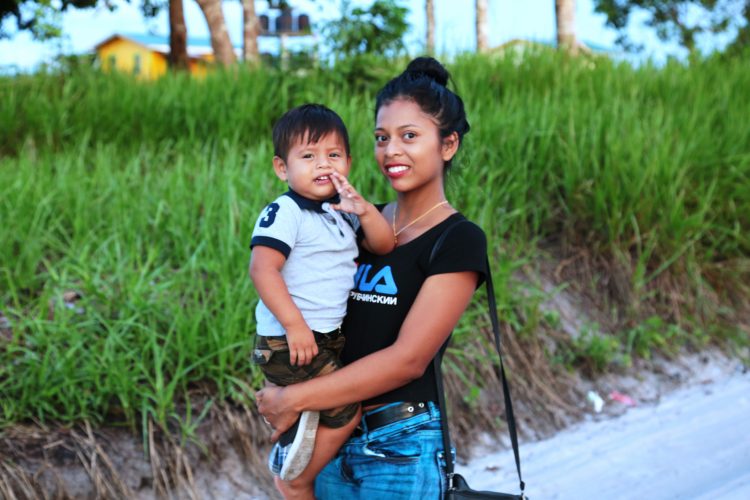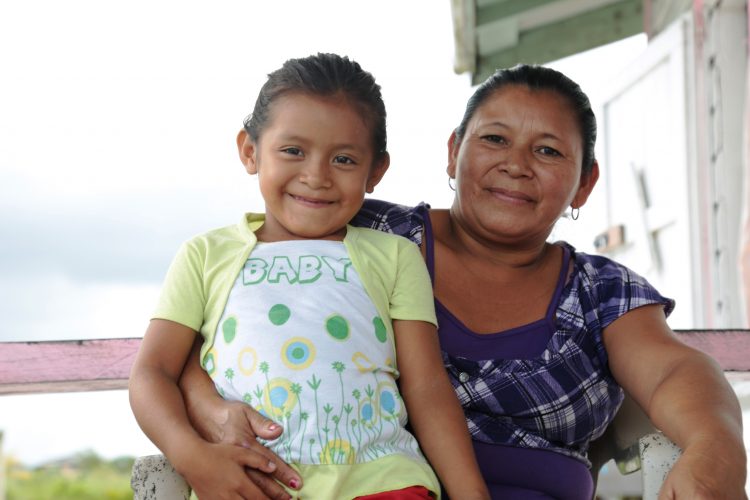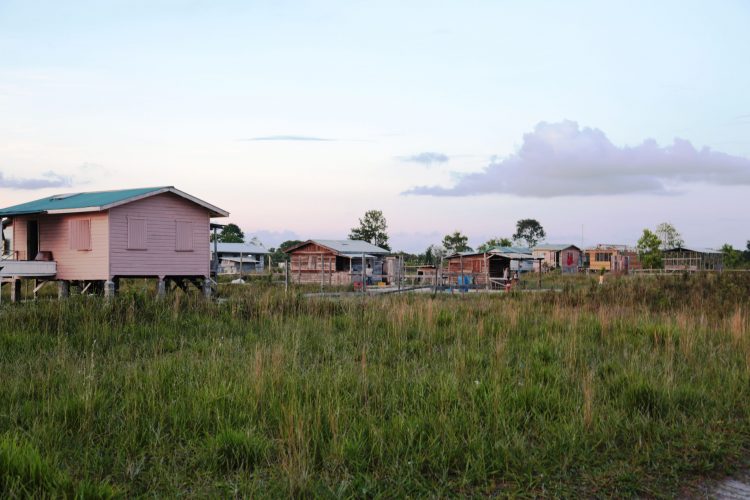Sandville is a new village; it was formally established 2 years ago, but some of its residents had settled there between 4 to 10 years ago. The village which is situated off the Linden/Soesdyke Highway through the Marudi Road is home to more than 400 people, many of whom are Amerindians.
It is behind Swan Village and bordered by forest on the opposite end; a shortcut through the forest leads to Kuru Kururu some 2 miles away. Swan Village Chairman Norbert Charles also oversees Sandville.
A government-owned 15-seat bus is the only steady transportation and it is used for both Swan and Sandville, so villagers often call a taxi to take them to the Soesdyke junction, where they take a bus to the city. Some persons, who can manage the distance, walk to the highway and wait for a bus coming along the road from Linden.
On the day I visited, it had barely rained, according to villagers, but already there were pools of water settled in the lower parts of the sand road. In some places, the water ran off into lower yards creating little ponds. School was in session, but some children were at home. This had nothing to do with the teachers’ strike; parents said they did not have sufficient funds to buy school supplies. A few of them assured me that they were trying to get school supplies so that the children could turn out for the second week.
In one yard, Shenell played cricket with her nieces, one of whom knew how to swing her bat and kept hitting the ball out of the yard.
Indranie Clayto sat on her stairs with her two youngest children watching the game next door. She lives in what is known as the ‘squatting area’ of Sandville. Clayto has been living there since 2008. She was originally from Soesdyke.
The woman noted that being accustomed to a more convenient life in Soesdyke made it difficult at first to adjust to not having potable water or electricity. She added, however, that she loves how quiet the area is and that children can enjoy the simple life.
It has been only a year since she and other villagers have been receiving potable water, but she does not use it for drinking purposes; no one does. Instead, villagers catch rainwater in their tanks and barrels for drinking. They light their homes through the use of solar panels they received from the government.
Clayto fretted about sending her son out to nursery school from next week all the way in Kuru Kururu. She does not like the distance and hopes that if not Sandville, at least Swan could have a school for the nursery and primary children. The school at Kuru Kururu is over 2 miles away using the shortcut through the forest and over 3 miles using the highway. The shortcut is said to be dangerous.
Sandville, like Swan, Kuru Kururu and other small communities along the highway has suffered frequent break-ins. One woman, who did not want to be named, said she had been a victim of robberies four times already. She mentioned that the thieves were apprehended and placed on bail, but never returned for their court appearance and nothing came out of the matter.
Children suffer the same fate. If they miss the bus because maybe they are late and have to use the shortcut, they would have their lunch stolen along with their pocket money. In one recent case a student was stabbed and though the perpetrators were identified and caught, they were let go soon after.
Nine years ago, Samantha Joseph and her family left White Water Village in the North West District and settled in Sandville. “We left in search of jobs,” Joseph said. Back in White Water her husband picked oranges and worked on an eddo farm to sustain the family while Samantha was a domestic worker. Today he is a labourer on another eddo farm at Kuru Kururu; she no longer works outside of the home. The Josephs have five children: three boys and two girls. The girls attend Kuru Kururu Nursery and Primary schools while the boys work with their father whenever there is work.
Joseph said that although life in Sandville is similar to that in White Water – they started off with fetching water from the creek and relying on lamps for light – the idea of living somewhere new was a bit of a challenge, not knowing the people in the area. Now that they have potable water and solar panels for light, things are better, but she does not know for how long since she lives in the squatting area and hopes she will not have to move anytime soon. She hopes to be able to pay for land she lives on.
The school bus charges $60 for children and $100 for adults; it goes as far as the Soesdyke junction. Joseph said that the bus does not always work and when it does not her girls take the shortcut to school. She hopes that soon villagers will have the convenience of cleaner tap water, electricity and more jobs.
Carlos Sukhdeo was making his way home from Kuru Kururu. He explained that he is from there and moved to Sandville four years ago. He had taken the shortcut and was walking though he usually rides his motorcycle. It had broken down and he had just bought parts to fix it. As we came around the bend a distance from his house, his daughter, Haley, caught sight of him and began happily screaming that her daddy was home. All excited she gave him a hug, then disappearing inside she returned with an umbrella to cover him from the drizzle that had begun while we continued taking.
His wife, looking on from the door, said Haley was their second child; their first daughter had died soon after she was born in 2015. She mentioned also that they had a new addition to the family only a month ago, then turned away to see to their son who had started to cry.
Sukhdeo laughed when asked about his adjustment to Sandville, mentioning that he did not know what it was to be fetching water from the creek until he moved there. Life for him has become a routine now and things have gotten better with the solar panels and potable water. It has been a while since he has had to go to the creek, he said.
When it comes to getting groceries, vegetables and meat, Sukhdeo usually buys in Kuru Kururu on his way home. Sometimes they buy from the van that comes around on weekends or the little shops in the area.
Marlyn Allick was at the back of her yard spraying insecticide on the acushi ants threatening her kitchen garden. She had moved from Wauna in the North West District in 2007 and settled with her husband, two daughters and two sons in Grove, East Bank Demerara, where there were all the necessary conveniences and life was good until one tragic incident.
Her husband, who traded in Venezue-la with their oldest son, would venture to the neighbouring country for months at a time. Their last visit saw them being away for almost 4 months and Allick recalled how thrilled she was when she got a call from her son saying that they were returning home the following day. But the news she received the next day changed everything: her husband and 17-year-old son were murdered at the Venezuelan border. She never learnt who was/were responsible for their murders.
The woman said that for quite some time she grieved, not able to come to grips with their deaths, and during this time relatives took on the responsibility of sustaining the family. Finally, she gathered enough strength and began working to support her family and 3 years ago she moved to Sandville.
Moving to Sandville, she said, was like going back to the North West because she had to learn to use the creek again and things weren’t as easily accessible as they were in Grove. Fortunately for her, the creek is just beyond her fence.
As we spoke, her granddaughter Azealia looked out the window and chattered to the birds passing overhead.
Allick’s business sees her taking orders from persons in the village for clothing or footwear and supplying their needs.
One of the biggest challenges is transportation and how costly it is to use a taxi. She hopes that soon the village can have electricity, better water quality with a steady flow rather than only a few times a day, and better roads. Once there are better roads she is certain more jobs and services will be available.
Taking me to the back of her yard, she pointed out some what she had planted: pineapple, coconut, cherry, golden apple, cassava, avocado, thyme and her most talked about tree, the sugar apple; she said many persons are surprised by the purple colour of the fruit.
On my way out of the village I came across a police pickup with four officers that had stopped along the Marudi Road. Having listened to numerous complaints about the police hardly going into the village, I talked with Constable Christopher Smith, who said that the patrol was the second one for the day and that almost every day they would patrol the area. He did admit that there were a lot of robberies in the area. I continued on my way, but noted that instead of heading to the village, the patrol did a U-turn and went back onto the highway.
